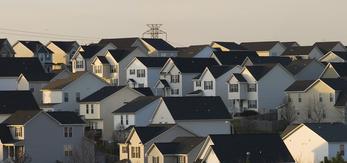The End of Urban Sprawl Is the Dawn of a New Economy

What’s the Latest Development?
Census data on population growth between 2006 and 2011 show that urban sprawl is on the decline, an encouraging sign for the rebounding economy, says Richard Florida. In the last two years, all but two of America’s largest population centers have grown, suggesting that people are beginning to move from the suburbs back to city centers (the two cities that did not grow were Detroit and Cleveland). In fact, ‘central metro counties accounted for 94% of US growth, compared with 85% just before the recession.’
What’s the Big Idea?
Cities are the core of America’s remaining economic competitiveness. Urban centers will continue leading the way out of the Great recession as ‘soaring gas prices make long commutes less appealing and high unemployment draws more people to big job centers.’ “The city has become the key social and economic unit of today’s economy, and its clustering and density the are the source of innovation, productivity improvement, and jobs,” says Florida. Detroit, for example, is now home to Quicken’s HQ and a new Twitter office is slated to be opened there.
Photo credit: shutterstock.com





